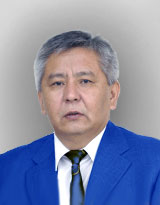Research on theories and concepts related to rural poverty and labor migration
https://doi.org/10.58732/2958-7212-2025-2-27-45
Abstract
Rural poverty and labor migration are interrelated socio-economic phenomena that determine the specifics of spatial inequality between urban and rural areas. Their mutual influence manifests itself through the rural population's limited access to resources, infrastructure, labor markets, and social services, which stimulates migration flows and at the same time creates new forms of vulnerability. The purpose of this article is to conduct a comprehensive theoretical analysis of the concepts of rural poverty and labor migration, identify key stages in the evolution of scientific approaches to these phenomena, and determine analytical gaps that require further research. The methodological basis of the study consists of historical-logical, systemic, and comparative-historical approaches, as well as methods of analysis and synthesis, classification, and structural-functional analysis. Based on these methods, the theoretical concepts of classical, egalitarian, sociological, and multidisciplinary schools have been systematized. The results of the analysis made it possible to identify consistent patterns in the understanding of the phenomenon of rural poverty and its relationship with migration processes, as well as to show the multidimensionality of these phenomena through the categories of vulnerability, exclusion, and deprivation. Particular attention is paid to the gender aspect of rural poverty, reflecting structural inequality between men and women in access to resources and employment. In the future, comparative empirical studies are needed to assess the impact of different types of migration on the dynamics of household poverty, including vulnerable groups, as well as the development of methodological approaches to measuring multidimensional rural poverty, taking into account gender differences.
About the Authors
A. A. KireyevaKazakhstan
Anel A. Kireyeva – Cand. Sc. (Econ.), Leading Researcher
Almaty
M. T. Kurmasheva
Kazakhstan
Makpal T. Kurmasheva – PhD candidate
Almaty
References
1. Abrahamson, P. (2001). Sotsialʹnaya eksklyuziya i bednostʹ [Social exclusion and poverty]. Obshchestvennye nauki i sovremennostʹ, 2, 158–166.
2. Blanco, R. O. (2002). How we Define Poverty-Eradicating Extreme Poverty and Hunger. UN Chronicle, 39, 3.
3. Boot, Ch. (1902). Life and London of the people in London. London-New York: Macmillan.
4. Chambers, R. (1983). Rural development: Putting the last first. Upper Saddle River, New Jersey: Prentice Hall.
5. Deshingkar, P., & Farrington, J. (2009). Circular migration and multi-locational livelihood strategies in rural India. Oxford: Oxford University Press.
6. Hayek, F. A. (2005). Doroga k rabstvu [The road to serfdom]. Moscow: Novoe izdatelʹstvo.
7. Kamaruddin, R., & Samsudin, S. (2014). The sustainable livelihoods index: A tool to assess the ability and preparedness of the rural poor in receiving entrepreneurial project. Journal of Social Economic Research, 1(6), 108–117.
8. Lewis, O. (1968). A study of slum culture. New York: Random House.
9. Litinskaya, E. Yu., & Matyushina, Yu. B. (2016). Genezis osnovnykh teorii bednosti [Genesis of main poverty theories]. Vestnik VGU, 3, 74-77.
10. Malthus, T.R. (2001). Essay on the Principle of Population. Cambridge University Press.
11. Marx, K., & Engels, F. (1959). K kritike politicheskoi ekonomii [A contribution to the critique of political economy]. In Collected works (2nd ed.). Moscow: Politizdat.
12. Proudhon, J. (1998). Bednostʹ kak ekonomicheskii printsip [Poverty as an economic principle]. Moscow: Respublika.
13. Reclus, E. (2011). Projet de globe au 100.000. Paris, Éditions B2.
14. Ricardo, D. (1990). Theorists of Economic Growth from David Hume to the Present. With a Perspective on the Next Century. New York: Oxford University Press.
15. Smith, A. (1993). Issledovanie o prirode i prichinakh bogatstva narodov [An inquiry into the nature and causes of the wealth of nations]. Petrozavodsk: Petrokom.
16. Spencer, H. (1970). Social Statics: The Conditions Essential to Human Happiness Specified, and the First of Them Developed. London : Williams and Norgate.
17. Srivastava, R. S. (2020). Growing precarity, circular migration, and the lockdown in India. The Indian Journal of Labour Economics, 63, 79–86. https://doi.org/10.1007/s41027-020-00260-3
18. Sycheva, V. S. (1996). Izmerenie urovnya bednosti: istoriya voprosa [Measuring poverty levels: Historical overview]. Sotsiologicheskie issledovaniya, 3, 141–149.
19. Sztompka, P. (1996). Sotsiologiya sotsialʹnykh izmenenii [The sociology of social change]. Moscow: Aspekt Press.
20. UNDP. (2024). Naraschivanie natsionalʹnogo potentsiala dlya effektivnogo snizheniya bednosti v Kazakhstane [Building national capacity for effective poverty reduction in Kazakhstan]. Retrieved from http://www./projects/files/.htm
21. UNESCAP. (2020). Obzor Pekin+25: Gendernoe ravenstvo i rasshirenie prav i vozmozhnostei zhenshchin v stranakh SPEKA [Beijing+25 review: Gender equality and women’s empowerment in SPECA countries]. Retrieved from https://www.unescap.org/sites/default/files/ESCAP_B25_Central_Asia_Report_20200911_RUS.pdf
Review
For citations:
Kireyeva A.A., Kurmasheva M.T. Research on theories and concepts related to rural poverty and labor migration. Qainar Journal of Social Science. 2025;4(2):27-45. (In Kazakh) https://doi.org/10.58732/2958-7212-2025-2-27-45




















